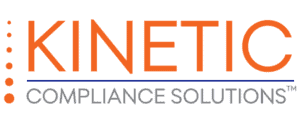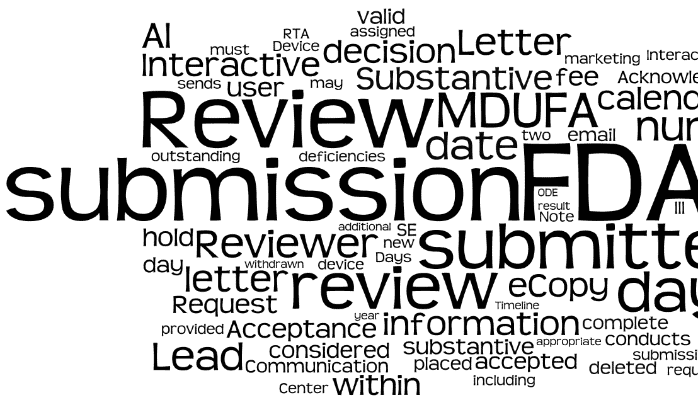You’re in the process of developing technology, have established you’ve got a medical device on your hands, and know it will require FDA 510(k) clearance. Navigating this process is critical to your company’s and your technology’s success. Why? Unlike most industries, selling your “prototype” or “next-gen product” (anything prior to clearance) is not permitted and is known as “pre-selling”. Limited promotion once you’re “510(k) pending” is permissible.
So how does the process work? And what’s the most efficient way to navigate it? And how long does it really take?
Let me break it down for you. I’ve distilled the process into five key steps. Companies that are launching their first 510(k) product will require a Traditional 510(k). In addition, the majority of 510(k)s going through FDA are Traditional (versus Abbreviated or Special, which are required to meet certain specific criteria), so we’re going to focus on Traditional 510(k)s.
Before jumping right into the good stuff, let’s start with some of the basics. 510(k) device clearances are based on the submitter demonstrating substantial equivalence to a predicate device. Demonstrating substantial equivalence involves comparing the safety and efficacy of the proposed technology to a predicate device. A predicate is most frequently a 510(k) product previously cleared (could be your own device or a different company’s for a Traditional 510(k)). If you do not have a predicate to compare to or cannot demonstrate substantial equivalence to a predicate, you’re looking at a different regulatory pathway than a 510(k).
Step 1. Strategy
Ensure your business and regulatory strategy align. A regulatory expert can assist with this. Maybe your end goal is 510(k) clearance that requires clinical data or even a Premarket Approval (PMA) claim. Think through whether there is a different application of your technology that would allow you to start generating revenue (note above constraints around pre-selling). Perhaps a phased approach that gets you a quick clearance for a baseline product, prior to clearing your flagship feature that requires clinical data. Or perhaps it’s selling to industries where the barriers to entry do not include regulatory approval (cosmetic testing or veterinary use, for example). If you’ve got the basic go-to-market strategy outlined, then it’s time to put forth effort into predicate identification and test plans, including applicable guidance documents / special controls and clinical requirements for your submission.
Step 2. Preparation
Preparing your 510(k) is going to involve implementing the testing identified in Step 1 and a lot of back and forth with your cross functional team. Remember FDA has to pick this thing up off a stack of submissions, understand how your technology works and how it differs (or is identical) compared to your predicate. A good 510(k) tells the story of substantial equivalence via data and analysis – how you’ve limited any risk to patients and how you know your device works.
Step 3. Submission
Submission of a 510(k) requires one complete paper copy and an electronic copy generated in accordance with FDA’s eCopy guidance. Send it in, start that clock, and congratulations – once FDA has it in hand, you’re 510(k) pending.
Step 4. Acceptance Review
The Acceptance Review (sometimes called ‘Refuse to Accept’) process was implemented a few years ago to limit the number of questions in ‘substantive’ review. It is essentially an administrative check that you have all required elements in your submission. FDA publishes up to a 15-day clock for this phase.
Step 5. Substantive Review
FDA publishes a 90-day review cycle for Traditional 510(k)’s. That’s calendar days – not business. So even when the office is closed for a Federal Holiday, FDA’s clock is ticking. FDA has performance goals to align with this timeline. They aim to resolve straight forward issues via interactive review (involving informal questions) wherever possible. There are no clock stops during interactive review. FDA’s goal is to provide substantive feedback (formally issued questions) 60 days into review, when necessary. FDA’s clock stops at this point.
The time a company takes to answer formal questions are a likely source of increased cycle time, especially when requested data hasn’t been generated. Once answered, that same clock starts from where it left off – so if you received questions on day 60, FDA has 30 days left to either accept your response or issue another set of questions after their formal questions are answered.
By Day 90 of the review you will either receive a clearance letter, a Non-Substantially Equivalent (to some extent, a “start over”) letter or, by Day 100, a Missed MDUFA (Medical Device User Fee Amendments) Decision Communication. In my opinion, the best way to avoid the two latter communications is to ensure the process described above involves open communication with the Agency via a pre-designated point person with the right expertise.
What data is available? FDA publishes all 510(k) clearances on their webpage. In April of this year, 242 510(k)s were cleared by FDA. Just last week, 41 510(k)s were cleared by FDA across an array of device types. This one-week glimpse in time yields the following data: 34 of the 41 (83%) of these submissions were Traditional 510(k)s. These Traditional 510(k)s had an average time to clearance of 176 days ranging from 23 to 394 days. 24 of 34 (71%) of Traditional 510(k)s took 6 months or longer to clear.
What can I take away from this as a device developer? This gives insight into the amount of submissions FDA is reviewing. Time to clearance will vary depending on device type, FDA 510(k) review panel and submission quality. A reasonable estimate of ‘how long it will take’ can be drawn by assessing historical clearance times for the specific device type you’re working with, understanding trends such as FDA / Public Health areas of concern (for example and recently – reprocessing) and engaging the right team to obtain clearance. Plan for this ‘time’ in the normal device development and do not be afraid to engage FDA (intelligently, strategically and when necessary).
If you have any questions on this article, do not hesitate to reach out via email to Robin Martin. Kinetic Compliance Solutions, LLC partners with companies to provide legal and regulatory consulting solutions in the highly regulated medical device and life sciences industries.
This article represents the author’s views based on experience, in addition to publicly available information accessed on May 16, 2016 here.
Content in this article is not intended to be legal advice.

